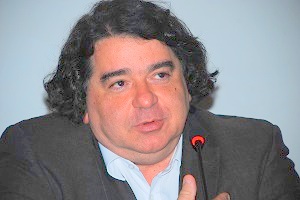[Paper: Identification of the Chemical Bonding Prompting Adhesion of a-C:H Thin Films on Ferrous Alloy Intermediated by a SiCx:H Buffer Layer. F. Cemin, L. T. Bim, L. M. Leidens, M. Morales, I. J. R. Baumvol, F. Alvarez, and C. A. Figueroa. ACS Appl. Mater. Interfaces, 2015, 7 (29), pp 15909–15917. DOI: 10.1021/acsami.5b03554]
United atoms, adhered films
With an innovative approach on an academic and industrial problem, a study wholly conducted in Brazil has brought significant advances in the understanding of the adhesion of DLC (diamond-like carbon) films on steels. The results of the work, which were recently published in the journal Applied Materials and Interfaces of the American Chemical Society (ACS), can help optimize such adhesion, thus prolonging the life of DLC films and expanding their use in the industry.
The team of scientists was particularly interested in the DLC potential to increase the energy efficiency of internal combustion engines. In fact, if all car engine components were coated with DLC films, the owner of that car would spend 5-10% less fuel and save the environment a good deal of greenhouse gas emissions and other pollutants, among other advantages. The reason for such saving lies in the ultra-low friction of DLC, since friction is the force responsible for wasting fuel while providing resistance to the motion that the parts of the engine make among themselves.
However, DLC has a drawback: it does not adhere to steel, causing quick delamination of the films from the substrate. To work around this problem, both in the laboratory and in industry, it is customary to deposit a layer containing silicon, known as interlayer, over the steel. The DLC film is then deposited on top of it. The result is a “sandwich”, which does not come undone easily.
In the paper published in the ACS journal, the authors experimentally analyzed a “sandwich” consisting of a steel substrate, an interlayer of silicon carbide (SiC) and a DLC film. Both the interlayer and the film were deposited by a quick process that generated thin layers of a few nanometers (up to 10). Mainly, two issues differentiated this study from other similar studies in the scientific literature. Firstly, the team focused in analyzing what happened in two regions corresponding to the interfaces of the interlayer with the film (upper) and with the steel (lower). Secondly, the scientists made a chemical approach on the matter of adhesion.
“This work has identified the chemical structure that generates adhesion in lower (SiCx: H/steel) and upper (a-C:H/SiCx:H) interfaces, which make up the a-C:H/SiCx:H/steel sandwich structure”, said Carlos A. Figueroa, professor at the University of Caxias do Sul (UCS) and corresponding author of the article. “The mechanisms found in the bibliography raised physical or mechanical aspects, but not chemical ones,” said Figueroa, who graduated in chemical sciences from the University of Buenos Aires (UBA) and has a doctorate degree in physics from the State University of Campinas (Unicamp). “However, adhesion is generated by the sum of all individual chemical bonds existing among DLC, the interlayer and steel,” he adds.
Scientists kept a constant film deposition temperature, but varied the interlayer deposition temperature, generating a group of samples deposited at 100° C and another one at over 300° C. After analyzing them by a variety of techniques, especially, X-ray photoelectron spectroscopy (XPS), researchers found that the lower interface of the interlayer, regardless of the deposition temperature, was largely composed of silicon atoms (from the interlayer) bonded to iron atoms (from the substrate). At the upper interface of the interlayer, the team found differences according to the deposition temperature of the interlayer. In the samples deposited at 100° C, oxygen atoms bonded many of the silicon and carbon atoms, preventing the carbon of the film to strongly bond to the silicon of the interlayer, and resulting in a film without good adhesion. In turn, scientists did not find oxygen in the interface of the samples deposited at over 300° C, but bonds between carbon and silicon atoms, which caused the film adhere well to the interlayer.

Besides Figueroa and students of the research group he leads in UCS, also authored the paper researchers from the Institute of Physics at Unicamp, where the XPS measures were made, as well as a scientist from the Federal University of Rio Grande do Sul (UFRGS) that, together with the other authors, participated in the discussion of results.
The work received the support from Brazilian Science funding bodies (Capes, CNPq through INCT National Institute of Surface Engineering, Fapergs), of Petrobras, UCS, the European Commission (Marie Skłodowska – Curie Actions) and Plasmar Tecnologia (a small company that is developing, through a TECNOVA RS project, an industrial equipment to deposit DLC on steel aiming to increase the energy efficiency of car engines).

